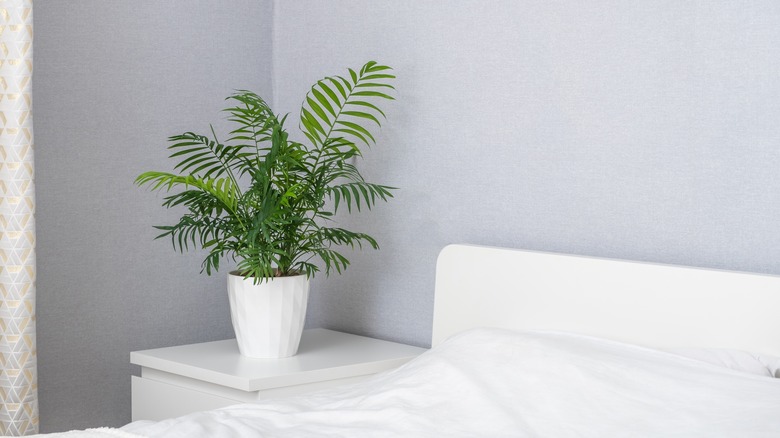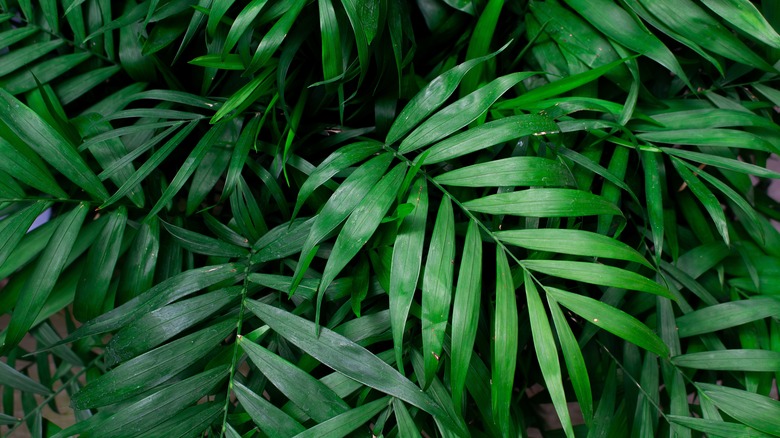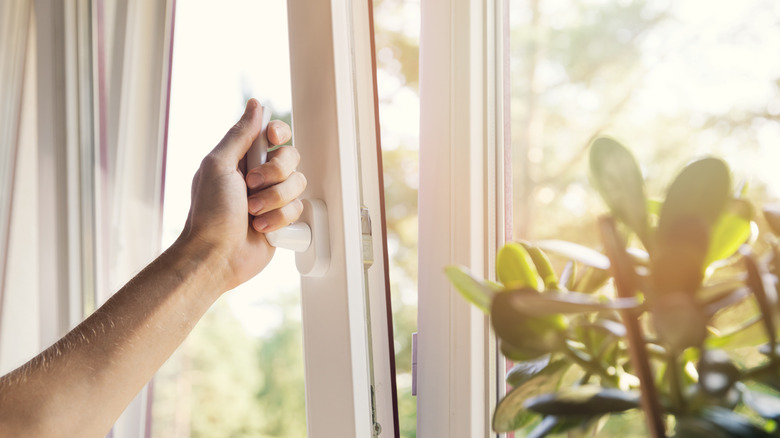Can This Gorgeous Palm Help To Purify The Air In Your Home?
Introducing plants into our living spaces not only beautifies our surroundings but also brings with it the promise of cleaner air. So-called air-purifying plants — such as the parlor palm (Chamaedorea elegans) – are marketed for their ability to create a healthier living environment. This tropical palm adorned Victorian parlors in the 19th century and has been a popular houseplant ever since. While these palms are able to filter out pollutants, they may not significantly improve indoor air quality on a large scale. A study by NASA found that plants can remove some toxins from the air in enclosed spaces. However, research suggests that to really improve air quality in home and office spaces, opening a window is your best option.
Parlor palms have slender stems and pinnate leaves with up to 60 narrow leaflets, creating a delicate feathered effect. Native to the understory of tropical rainforests in Mexico and Guatemala, this palm prefers bright light with protection from direct sun. The parlor palm is considered easier to grow than the popular majesty palm, so it's a great choice for those looking for a low-maintenance option.
How does the parlor palm purify air?
Plants possess the natural ability to enhance air quality through various mechanisms. They absorb volatile organic compounds (VOCs), which are emitted by a range of household items, from paints to cleaning products. These chemicals are broken down by the microbes in the soil, which can even use small amounts of these pollutants for food. While all plants have this ability, the rate and efficiency differ between species depending on the number of leaves, stomata, and wax composition.
Palms have been a focus of air-purifying studies thanks to their large leaf surface area. A University of Hawaiʻi at Mānoa study found that the parlor palm releases an abundant amount of moisture into the air with a 9/10 rate for chemical vapor removal while the closely related bamboo palm (Chamaedorea seifrizii) was also found by NASA to improve air quality in enclosed spaces. Additionally, through the process of photosynthesis, plants take in carbon dioxide and release oxygen, contributing to an oxygen-rich indoor environment. Species with high leaf surface area, such as the parlor palm, are associated with higher rates of photosynthesis, emitting more oxygen into their surroundings.
Why parlor palms may not significantly improve air quality
While their contribution to cleaner air cannot be overlooked, your parlor palm should not be the only air quality solution you rely on. A recent study by the Journal of Exposure Science and Environmental Epidemiology found that although plants do remove toxins from the air, they do so at an extremely slow rate. In fact, to achieve the same rate of air purification as the exchange with outdoor air, you would need ten plants per square foot. In this case, opening windows or employing an air ventilation system is much more efficient in improving indoor air quality.
It is worth noting that indoor plants have countless benefits for our well-being. From increasing productivity in schools and offices to improving mood and enhancing comfort, plants should be considered valuable additions to our homes and workspaces. The small improvements in air quality can certainly help supplement other means to ventilate and create fresher air indoors. Consider that healthy plants will have better functioning metabolic processes than plants under stress, so make sure to maintain a good care routine for your parlor palm and enjoy this ornamental Victorian favorite at its best.


